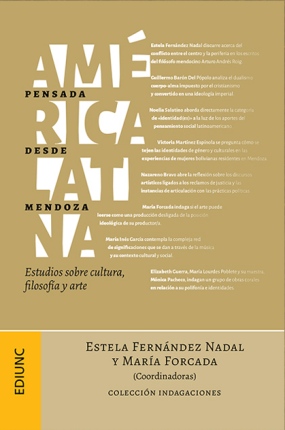Think from alterity. Practices and discourses in art, philosophy and social sciences.
Keywords:
identities, philosophy, art and social scienceAbstract
The book América Latina pensada desde Mendoza. Estudios sobre cultura, filosofía y arte, coordinated by Estela Fernández Nadal and María Forcada (Mendoza, EDIUNC, 2017) is a collection of eight works, from ten academics, coming of differents disciplinary frameworks: philosophy, sociology, visual arts and music. The articles shed light on differents affairs: the ideas of Arturo Roig and Enrique Dussel, the utopian root of popular movements, the experience of Bolivian women who lives in Mendoza, the artistic practices in the struggle for truth and justice, the political power of visual arts, the analysis of a Mendozan song and study of three Latin American choral works. This diversity of issues are articulated by the theme of the identities, linked to the history and the power. This common thread serves to contemplate on the complexity of the discursive practices through which the historical figurs built their relationship whith the world and the others.
Downloads
References
Fernández Nadal, E. y Forcada, M. (coordinadoras) (2017). América Latina pensada desde Mendoza. Estudios sobre cultura, filosofía y arte. Mendoza, EDIUNC.
Roig, A.A. (1981), Teoría y crítica del pensamiento latinoamericano, FCE, México.

Downloads
Additional Files
Published
Issue
Section
License
Authors who have publications with this journal agree to the following terms:
a. Authors will retain their copyright and grant the journal the right of first publication of their work, which will simultaneously be subject to the Creative Commons Attribution License that allows third parties to share the work as long as its author and first publication in this journal are indicated.
b. Authors may adopt other non-exclusive license agreements for distribution of the published version of the work (e.g., deposit it in an institutional telematic archive or publish it in a monographic volume) as long as the initial publication in this journal is indicated.
c. Authors are allowed and encouraged to disseminate their work through the Internet (e.g., in institutional telematic archives or on their web page) after the publication process, which may produce interesting exchanges and increase citations of the published work (see The effect of open access).

